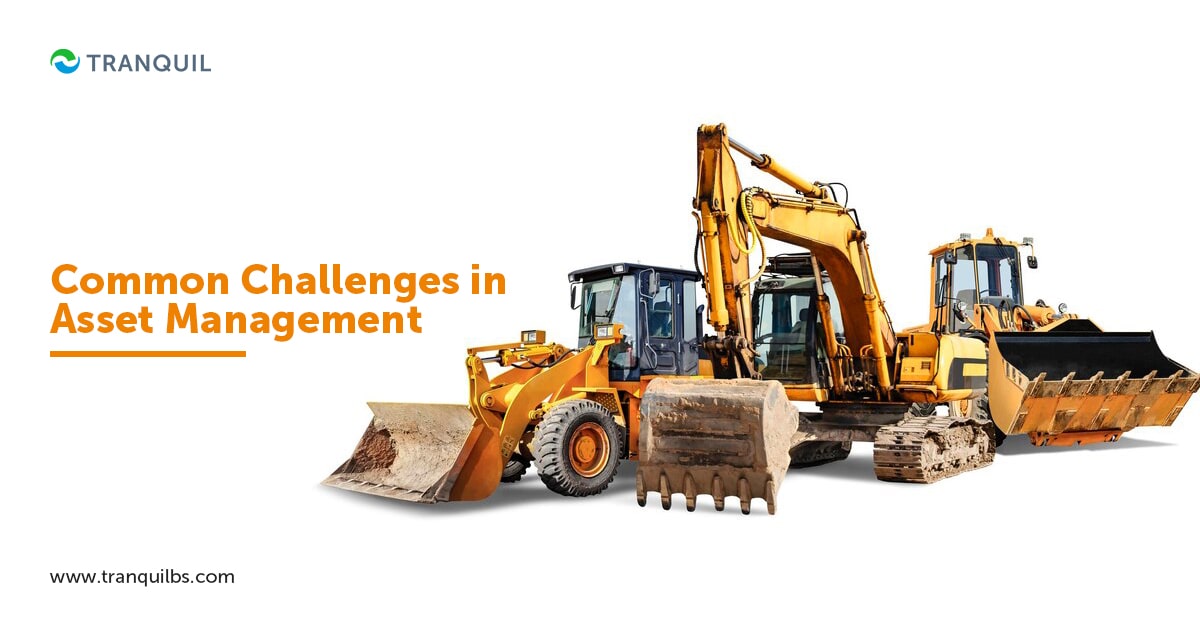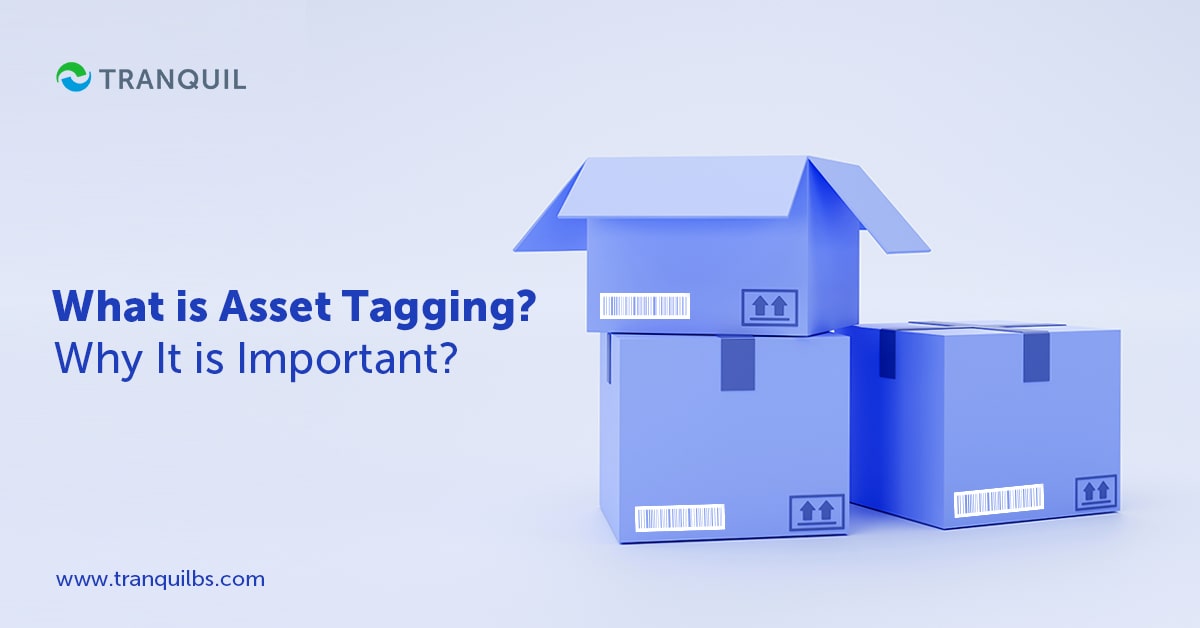Importance of Fixed Asset Tracking
Every organization, whether a business or nonprofit requires assets for its daily functions and operations.
It is important to maintain them in a good condition so that you get optimal returns on your investment in those assets.
What is a Fixed Asset?
A fixed asset is immovable, and used by businesses to help generate income, and hence also called capital assets.
Examples include land, buildings, machinery, vehicles, equipment, computers, air-conditioners, and so on.
Intangible assets like goodwill, intellectual property, shares, and mutual funds are also fixed assets.
Most fixed assets (except for land) are subject to depreciation.
ALSO READ: Unique Ways Asset Management Tools Can Benefit Your Business
What is Fixed Asset Management?

The process of maintaining and tracking the physical assets of an organization is referred to as fixed asset management.
An asset management system can help organizations track and monitor assets, supervise machinery and equipment in several locations, increase the efficiency of operation, reduce maintenance expenses, and maintain a record of assets from acquisition to disposal, including lost, stolen, or retired assets.
In other words, with proper fixed asset management, organizations can monitor vehicles and equipment, evaluate their condition and ensure everything is in order.
It helps them to reduce inventory loss, downtime and failure of equipment, while improving the lifetime value of an asset.
ALSO READ: ERP software in Warehouse & Fixed Asset Management
What is Fixed Asset Tracking?
Knowing where a fixed asset is at any given point in time – or it’s real-time location, is fixed asset tracking.
It is a critical part of asset management, and helps in ensuring that your assets are properly organized.
There are several tools and methods used for asset tracking, and it helps in gaining important information like the present location and condition of a specific asset, its present status – whether free or assigned, and if assigned, to which employee, which assets need maintenance or replacement, and so on.
With proper asset tracking, companies are capable of taking more effective strategic decisions.
ALSO READ: Keys To Make Project Management Success
Asset Tracking Vs Asset Management
![]()
Asset tracking is only concerned with retrieving the exact location and condition of a fixed asset.
It is a subset of asset management.
Asset management has a wide scope that includes maintenance and analysis of assets, evaluating the assets for accounting purposes, etc.
Fixed asset tracking let us know about the location, condition, and quantity (where applicable) of the physical property of an organization.
Asset management, on the other hand, goes further, including forecasts, evaluation, analysis etc. of the asset for accounting purposes.
Both asset management and tracking help to boost organizational productivity and business operations, and help to save time and money.
Both asset tracking and management solutions are available with cloud-driven and mobile technology, letting you access and update data from any location or device; you can even schedule maintenance for your assets through the software.
ALSO READ: Debit notes Vs Credit Notes
It is important to both track and manage your fixed assets well to succeed in your industry; poor asset management can harm your organization not just in the present, but for your future goals too.
Not having thorough control over your assets can cause you to lose money.
But when you do implement the right asset management software, you can eliminate human error, have more accurate data about loss of equipment, increase customer satisfaction and loyalty, and maintain compliance with regulations.
This translates into improved organizational efficiency, business growth, and improved revenues.
How to Keep Track of Fixed Assets?
Accurate tracking of assets is a very common challenge for most businesses.
The more assets a company owns and uses, and the more mobile they are, the more challenging the job of tracking them.
For example, you would need to collect information on asset location, who has the asset, and the change in their condition as they move between departments or to external service providers or vendors.
Conventional methods were manually written ledgers and spreadsheets – with risks of human error and outdated information being common.
ALSO READ: What Is Cloud Data Protection?
Such tracking was therefore not really useful – organizations would lose track of the asset, and be unable to perform regular maintenance, causing quicker replacements – all of this means huge expense, which could have been avoided.
Manual processes may not even help businesses to know how many assets of what type they have and how much expenses they are raking up due to inefficient processes.
Several departments track assets – accounting, purchase, operations, audit, orders, and more.
This is because they need some information on assets to make critical decisions for the benefit of the organization.
Tracking Assets with a Fixed Asset System
By implementing a system for fixed asset tracking, you can have more accurate information related to your assets, and not have to resort to guesswork for important decisions like repairs and replacements.
With robust asset tracking software, organizations today have full control over asset management, even through employee mobile devices.
Thanks to integrated systems which include cloud, mobile scanners and apps, it cuts costs with regard to software and hardware.
ALSO READ: Warehouse Management System and its Benefits
Methods of Fixed Asset Tracking
![]()
Tracking assets can be done in several ways, depending on the needs of individual businesses.
1. Barcode Labelling
Barcodes are widely used in retail, and are also valuable in tracking assets.
In this method, a set of black and white lines are scanned by handheld scanners, or Smartphones, and it is more cost-effective than other methods; its ideal when you don’t require a lot of data to be stored.
They come as printed labels and while they help to track assets, they don’t allow unique identification.
ALSO READ: Why Use a Barcode For Tracking Inventory And Assets?
2. QR Codes
QR codes make asset tracking super easy.
You can have custom code sets, with each capable of storing vast amounts of digital data, like manufacturing date, unique ID, known location, and so on.
Essentially, QR codes identify individual assets, making it easy to track; they also enable restocking of spares effectively and simply.
3. RFID Tagging
Radio Frequency Identification tracking uses radio waves to send digitally encrypted data.
The object to be tracked has a tag, which can be read by the device which picks up its signal.
They are bulkier and more expensive as compared to barcodes, but provide greater security, making them perfect for high-value items.
They are widely used in hospitality, healthcare, museums, theme parks, and other tourist related operations.
ALSO READ: What Are the Stages of Fixed Asset Lifecycle?
4. BLE/GPS
We all use GPS in maps; in asset tracking, it helps safeguard against theft, and can also help third parties like clients, vendors or contractors to locate specific assets.
Bluetooth Low Energy tracking is fairly new but is being increasingly used to track assets.
We use Bluetooth to connect phones with wearables, speakers, etc.
BLE broadcasts beacons that facilitate inter-device communication, and are valuable when you need high battery capacity more than being able transfer a lot of data.
5. NFC Tagging
Similar to RFID, near-field communication covers shorter distances, and can be implemented with Smartphones.
NFC payments are commonly used the world over today.
In asset tracking, it has the advantages of speed, tight security, and efficiency; however, it costs more than other asset tracking methods.
ALSO READ: Emerging Trends in Supply Chain Management
Why is Fixed Asset Tracking Important?
Asset tracking is extremely important as it helps the organization exercise more control over its assets and can supervise them better, especially where performance and valuation are concerned.
By collecting and analyzing this data, you can understand the optimal performance conditions of the asset much better, and it helps in preventive maintenance.
By scanning assets regularly, maintenance personnel can be alerted to what replacements are required, if the performance is as expected or not, potential issues that could cause breakdowns, etc.
Many industries may use industrial buildings or pipe fittings that look similar or other identical assets.
These can be identified uniquely with the help of asset tracking tools, ensuring there is clarity, and it saves time and effort.
ALSO READ: What is Asset Depreciation?
Benefits of Asset Tracking
![]()
Let’s take a look at the benefits of asset tracking in detail:
1. Centralized Information for Asset Audits
With a central hub of information, you don’t have to manually locate assets during your annual or quarterly audits; it’s all there in the database, with exact locations and other pertinent information.
Your team can save a tremendous amount of time as they don’t have to search for specific assets.
2. Proactive Asset Maintenance
Repairing an asset when it breaks down can prove to be very expensive; in fact maintenance of assets can take up nearly half of your operations budget, and 80% of your time.
When you use preventive maintenance methods, like implementing Tranquil Asset Management and Tracking software, you can cut down on these costs tremendously, and free your teams to focus on value-adding activities that spur growth.
ALSO READ: Important ERP Modules and Functions
3. Reducing Asset Loss & Theft
This can be an uncomfortable issue, but unfortunately, it happens all too often.
With hybrid workforces, varying employee schedules, and so on, it opens opportunities for theft.
Experts opine that the majority of major loss from theft happens because of theft opportunities presented to employees albeit inadvertently.
However, when you have a reliable asset tracking software in place, you can oversee your assets properly and make sure that your fixed assets are secure.
Fixed asset tracking also enables you to:
- Eliminate duplicates
- Insure against accident and natural disaster liabilities
- Measure asset performance with regard to its position in its life cycle
- Comply with regulations
- Know which employee is responsible for its maintenance
- Ensure that the temperature and other conditions around the asset are as per the recommendations of the manufacturer or maximum quality standards.
ALSO READ: Ways to Improve the Procurement Process
Conclusion
It is undeniable that tracking assets is a critical activity for any organization.
We have read above the many benefits that are offered by asset tracking software, and the advantages it offers over manual tracking methods.
Tranquil ERP has a robust asset tracking module that not only lets you meticulously track each asset, but also lets you schedule maintenance, and maintain minute details of all your assets from the time they enter your organization, till the time they are disposed or retired. You can ensure they are in optimal working condition, and extend their working life so that you get excellent returns on the money you invest in them. If you’re confused as to how Tranquil can help manage your assets, don’t fret! Simply schedule a FREE demo at your convenience, and we’ll be happy to take you through the software and answer your queries.



